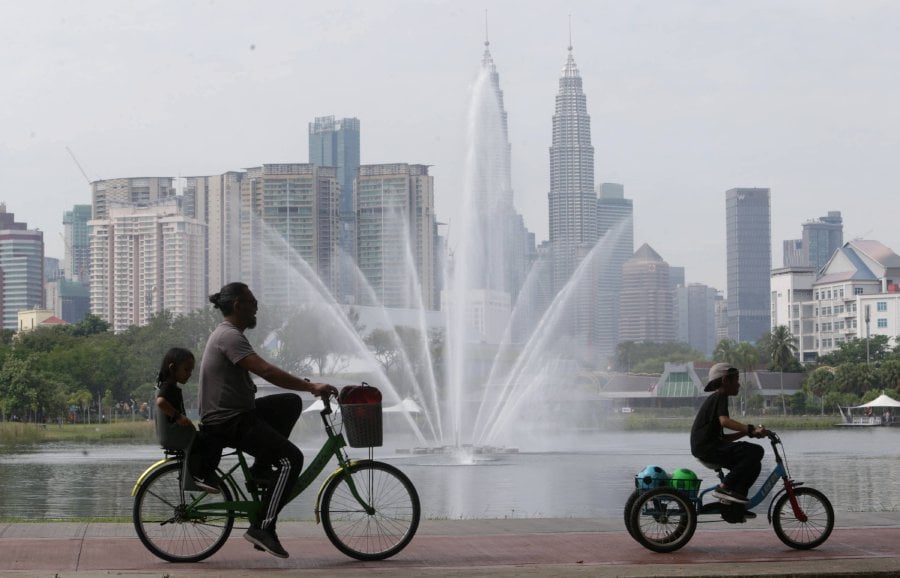On 1 September 2023, the Prime Minister, Dato' Seri Anwar Ibrahim, launched Malaysia's New Industrial Master Plan 2030 ("NIMP 2030").
The plan aims to propel Malaysia's manufacturing sector to foster economic growth, job creation and value-added production.
NIMP 2030 also highlights the importance of raising economic complexity for sustainable growth.
Two prominent economists -Hidalgo and Hausmann observed that economic complexity captures the level of economic sophistication in terms of knowledge, innovation, technology, and export diversification, and this in turn can affect economic productivity. Along these lines, NIMP 2030, emphasises innovation and nurturing an ecosystem that promotes research, development, commercialisation and innovation.
Where we are currently?
Malaysia is currently transition to an innovation-driven high-income economy. In this stage, efficiency in manufacturing becomes a nation's dominant source of competitive advantage. The products produced may be sophisticated, and there is much reliance on imported technology and designs. Technology is accessed through foreign direct investment, licensing, joint ventures, and imitation at this stage of economic development.
Malaysia had started out as a primary commodities producer & exporter after independence. By around the mid-1980s, manufacturing had overtaken agriculture as the main contributor towards the country's Gross Domestic Product (GDP). The rapid expansion of Malaysia's export-oriented manufacturing sector, made possible by high inflows of foreign direct investment, had helped the country break away from its overdependence on commodities. Not only that, the growth of the sector helped solve the problem of unemployment. By the early 1990s, the economy had virtually reached full- employment. The manufacturing sector also helped reduce poverty incidence and increase overall living standards in Malaysia.
As manufacturing has long been recognized for its role as an "engine of growth" in the development process, and considering the major role it played in the economic development, its continued strategic importance to Malaysia cannot be overstated.
Malaysia's Negative Deindustrialisation
However, more recently the manufacturing sector appears to be losing its shine, and deindustrialization seems to be in the cards for Malaysia. Deindustrialization is usually defined as the phenomenon whereby there is a steady decline in the manufacturing sector's share of employment. Almost all rich OECD countries are experiencing it. It has caused considerable concern in the affected countries, especially in the US during the early 1980s and later on in Europe, leading to vigorous debates about its causes.
Deindustrialization can be viewed as the norm in successful economic growth. As per capita income rises during the course of economic development, the share of employment in manufacturing rises at the expense of agriculture until a relatively higher level of development is achieved. Beyond a certain threshold of per capita income, however, the share of services in employment starts to rise at the expense of manufacturing.
This takes place for two reasons; firstly, higher productivity growth rates in the manufacturing sector relative to the services sector; and secondly, a systematic change in consumption patterns. This form of deindustrialization is considered "positive" because it is associated with rising real incomes and full employment, not because of a failure of the manufacturing sector.
A second form of deindustrialization, "negative deindustrialization," can be caused by the failure or inability of firms to respond to changing market conditions. The loss of jobs in the manufacturing sector is typically made up by employment in less productive service sectors and informal employment amongst others. It results in a slow-down in manufacturing output and productivity and prevents nations from achieving their full economic potential. Given the performance for the economy, jobs lost due to negative deindustrialization are not balanced out by jobs created in the services sector. Negative deindustrialization is thus associated with falling productivity and rising inequality due to disparity of labour productivity among sectors.
For the record, The International Journal of Economics, Commerce and Management, Vol. III, Issue 3, March 2015 provides a lucid discussion the subject matter of deindustrialization (actually I was quoted in this paper).
If deindustrialization is indeed in the cards for Malaysia, it cannot be positive deindustrialization. Malaysia's manufacturing sector is being affected by, among other things, rising production costs arising from a tightening labour market, and cheap exports (from, for example, China and Vietnam). The sector has also failed to make the transition to higher value-added activities.
The problems the manufacturing sector currently faces can be traced back to a lack of industrial deepening because of misguided institutional change during the 1990s. What needs to be done now is not the creation of more organizations, but effective implementation of an appraisal, reward and penalty system to improve coordination of activities among the relevant institutions to ensure industrial deepening.
Future Trajectory
However, Malaysia aspires to become a fully developed high-income economy by year 2030. Therefore the manufacturing sector would still undoubtfully continue to play a pivotal role. At present, the manufacturing sector contributes to approximately 24% of the GDP. If manufacturing were to contribute to a bigger portion of GDP, we cannot continue to rely on low skill, labour intensive industries and instead shift to high value added ones, which would invariably result in increased TFP (Total Factor Productivity).
It is imperative for us from now on to prepare for enhancements in TFP, which dictates structural and technological changes in the economy for the remaining years of this decade. One way is through creating strong technical linkages between the agricultural, manufacturing and service sectors. In economic jargon this said to be "neat complementary" and this causes industrial deepening.
In the case of Palm Oil Industry, the industry accelerates the shift of its activities from upstream to downstream, investing both in food-based and non food-based components to deepen the sector's palm oil advantage. The growth of the downstream activities is to be driven by a strong focus on finished components that generate high value, such as oleo derivatives and selected food and health-based products, and viable & sustainable output such as biofuels.
Whereas in the case of the Electronics and Electrical sector. One of the high-impact sectors that will augment our capabilities across the value chain, especially in the higher value-added upstream activities is Semiconductors. The obvious strategies are to upgrade from lower value-added activities such as test and assembly to the more mature areas of technology fabrication, expanding into advanced packaging and design of Integrated Circuits as well as supporting the growth of substrate manufacturers. So, in more ways than one, this sector can be revitalized.
In essence, the manufacturing sector should continue to play a crucial role, even though we may have progressed to become a high-income economy by the end of this decade. There is one caveat though, at that point in time, the manufacturing sector should have developed synergies (strong technical linkages) with other sectors and be characterized by a marked increase in TFP. Time is of the essence and we must make the necessary structural and technological changes now.
Conclusion: Ultimately, economic success and failure will increasingly be determined by the strategic acquisition and management, by businesses and individuals, of economically-relevant skills.
In the final analysis, achieving high-income status economy will be meaningful, only if the benefits trickle down to all Malaysians. However, attaining the high-income status is a prerequisite for improving people's wellbeing and achieving happiness. It ought to be noted that the top 10 countries in the United Nations World's Happiness Report are nearly always high-income economies.
---------------------------------------------------------------------------------------------------------------
Samirul Ariff is a widely quoted Economist & International Relations expert, he is a Senior Consultant with Global Asia Consulting (GAC). Samirul was previously a Senior Researcher at the Malaysian Institute of Economic Research (MIER). The opinions expressed in this article are his personal views.





